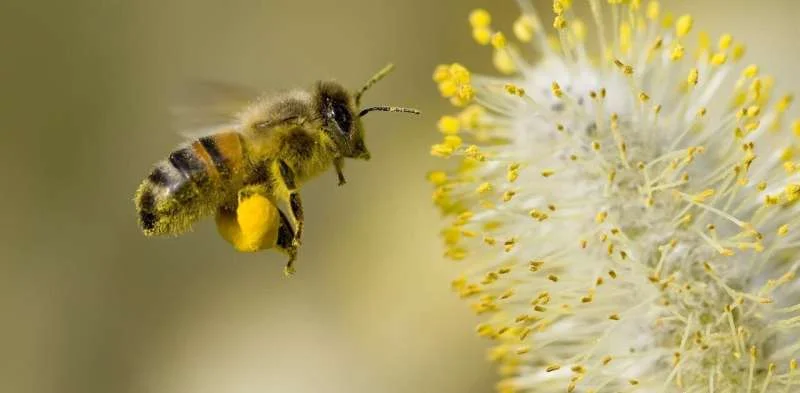Scientists explain how bees are good at decision making
- July 2, 2023
- 0
A honey bee’s life depends on successfully collecting nectar from flowers to make honey. Deciding which flower is most likely to yield nectar is incredibly difficult. Doing the
A honey bee’s life depends on successfully collecting nectar from flowers to make honey. Deciding which flower is most likely to yield nectar is incredibly difficult. Doing the

A honey bee’s life depends on successfully collecting nectar from flowers to make honey. Deciding which flower is most likely to yield nectar is incredibly difficult.
Doing the right thing requires weighing the intricacies of a flower’s type, age, and history – the best indicators that a flower can contain a tiny drop of nectar. Misunderstanding is a waste of time at best and, at worst, means encountering a deadly predator lurking among the flowers. In a new study published today eLife, Our team reports on how the bees make these complex decisions.
We challenged the bees with artificial flowers made from colorful cardboard discs, each containing a small drop of sugar syrup. Different colored “flowers” differed in their probability of offering candy, and also in how well bees could tell if the fake flower was offering a reward.
We applied tiny, harmless paint marks to the back of each bee and filmed each bee’s visit to the flower array. Next, we used computer vision and machine learning to automatically determine the bee’s position and flight path. From this information, we can predict and precisely time each decision made by the bees.
We have found that bees learn very quickly to identify the most useful flowers. They quickly decided whether to accept the flower or not, but surprisingly, their right choice was faster (0.6 seconds) on average than their wrong choice (1.2 seconds).
Typically, in animals – and even in artificial systems – a right decision takes longer than a wrong decision. This is called the speed-accuracy trade-off. This trade-off happens because determining whether a decision is right or wrong often depends on how much evidence we have to make that decision. More evidence means we can make a better decision, but collecting evidence takes time. For this reason, right decisions are often taken slowly and wrong decisions are made faster.
The speed-accuracy trade-off is so common in engineering, psychology, and biology that it might be called the “law of psychophysics.” Yet the bees seemed to be breaking this law. Other animals known to exceed the speed-to-accuracy ratio are humans and primates. So how can a bee with a tiny but wonderful brain be on the same level as primates?
To address this question, we turned to a computational model that asks what properties a system must have in order to achieve a speed-accuracy trade-off. We have created artificial neural networks that can process sensory data, learn and make decisions. We compared the performance of these artificial decision-making systems with real bees. From here, we can determine what the system must have in order to beat the compromise.
The answer was to give “accept” and “reject” responses, with different time-dependent thresholds of evidence. This means that the bees accept the flower only when they see it for the first time. Of course brought an award. If they had any insecurities, they dismissed them.
This was a risk-averse strategy that meant the bees might miss some beneficial flowers, but successfully focused their efforts only on those with the best luck and best evidence to provide sugar.
Our computer model of how bees make fast and accurate decisions matched well both with their behavior and with known pathways in the bee brain. Our model is reasonable for bees to make such efficient and quick decisions. At most, it gives us a template for how we can build systems such as autonomous robots for exploration or mining with these features.
Source: Port Altele
As an experienced journalist and author, Mary has been reporting on the latest news and trends for over 5 years. With a passion for uncovering the stories behind the headlines, Mary has earned a reputation as a trusted voice in the world of journalism. Her writing style is insightful, engaging and thought-provoking, as she takes a deep dive into the most pressing issues of our time.